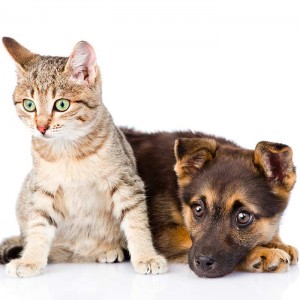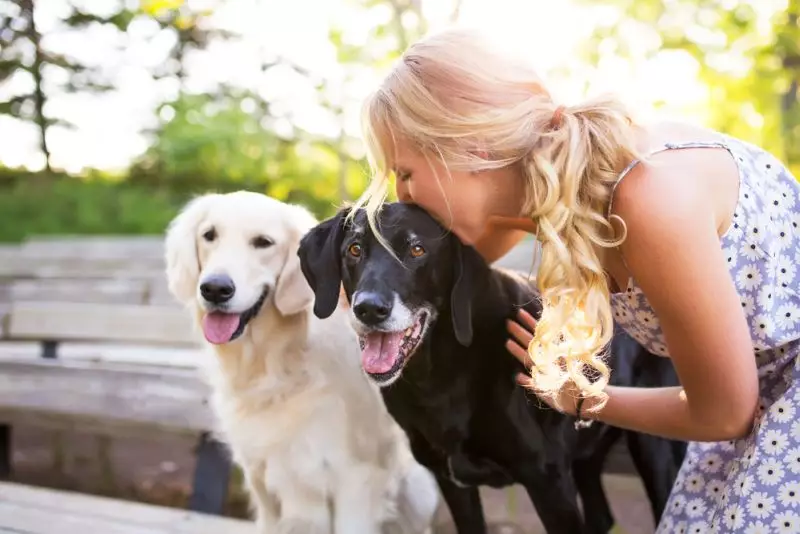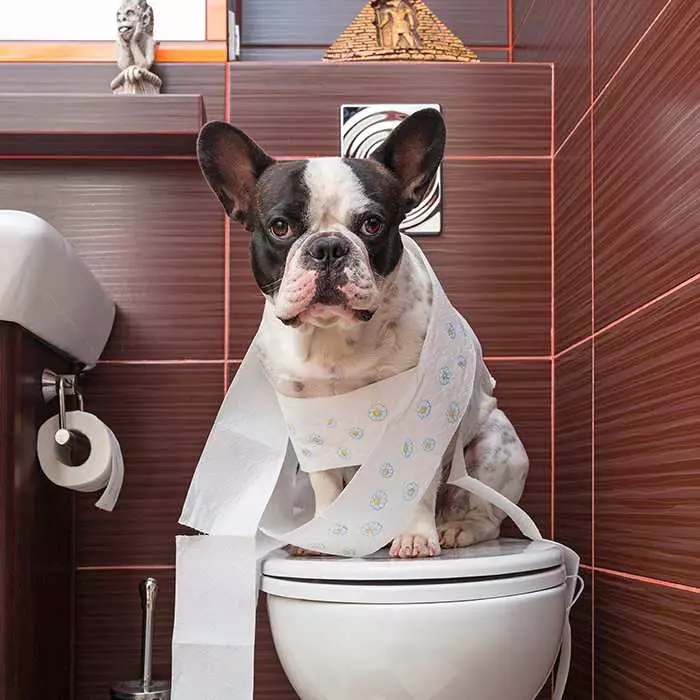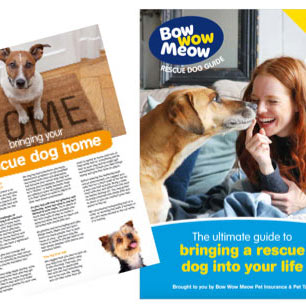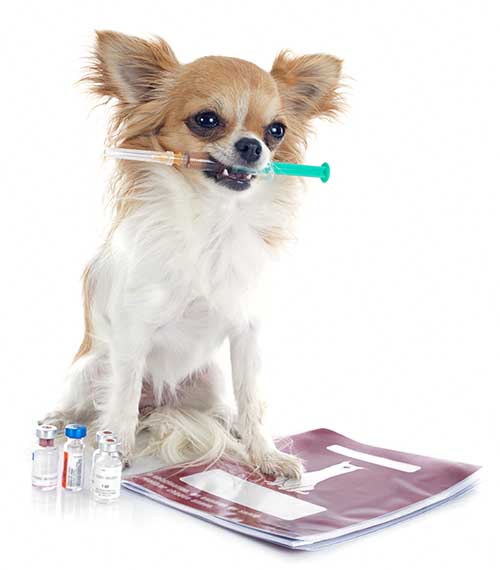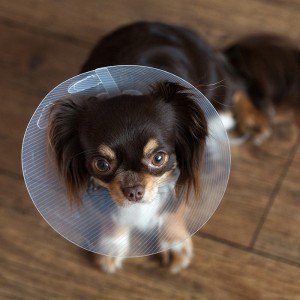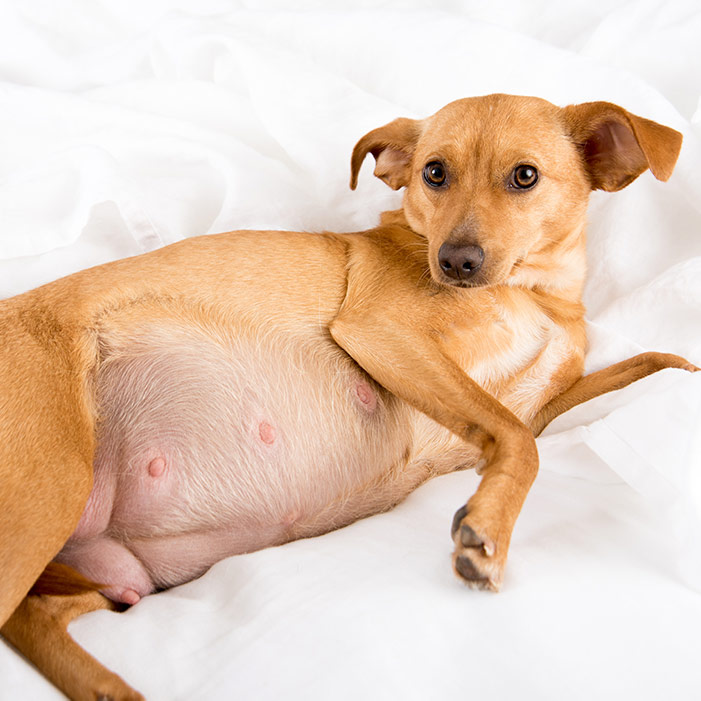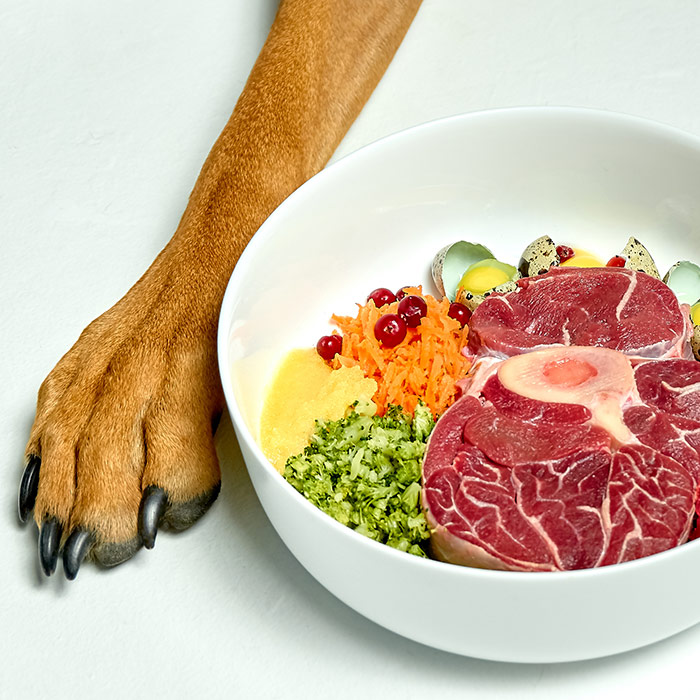Tips to avoid and treat separation anxiety in dogs
Whether you’ve welcomed a a new puppy or rescue dog into your home, or are getting back into a routine after the long summer holidays, you might find your pooch struggling to adapt when the kids go off to school and you head off to work.

Dogs are social animals – in the wild they live in packs with structures similar to families. While they have a strong need for social contact and interaction, we also need to prepare our dogs to be happy and comfortable when they are alone at home.
We bring you all the info you need to prevent your dog from experiencing separation-related stress behaviours once the initial excitement dies down and family members go back to their normal routines of daily life.
How does separation anxiety develop?
There are a few factors that can contribute to dogs developing separation anxiety:
- Early trauma – traumatic experiences in a puppy’s life can contribute to development of anxieties.
- Abandonment fear – especially if dogs have gone through multiple homes, they may fear the loss of their humans/ home.
- Being taken from their mum too soon – being taken away from their mum and litter at a very early stage (less than 7-8 weeks).
- Lack of stimulation – bored dogs often show symptoms of separation anxiety, however this is not actually anxiety, rather behaviours that can become habits (learned behaviours) over time and then develop into anxiety.
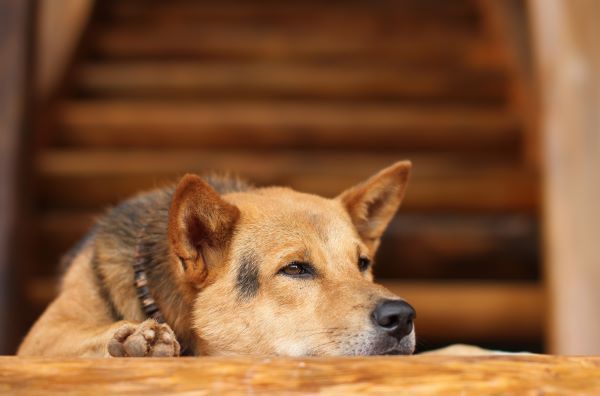
- Long periods of separation – if your dog has been left alone frequently for more than 10 hours.
- Big changes in life or of routines – e.g. moving house, loss of a family member, change from their owner working part-time work to full time.
- Cognitive decline – developing canine dementia can be a contributing factor.
- Velcro dogs – if your dog is just too clingy and develops dependency issues.
What is a velcro dog?
“Helicopter” pet-parenting – hovering around your pup all the time and watching him like a hawk, frequently checking if he toilets somewhere where he shouldn’t, if he get into things he shouldn’t or if he is okay – can also lead to separation anxiety.
These behaviours create an expectation and teach your dog how things do work within the relationship with you. The way your dog sees it is:
“If you check on me all the time, then having you around all the time is what we do”.
And it won’t take very long before you have created a “Velcro dog” – a dog that attaches to you like Velcro, that is like your shadow, that follows you around every step and every minute of the day. While all of this is great and comforting for your dog, this is what your dog’s brain chemistry gets adjusted to.
We humans know how set behaviours and routines can affect how we feel. Let’s say you like to exercise multiple times a week. Running or pushing weights in the gym makes you happy and good, and you soon start to feel like you need it. But say for some reason you cannot do it, for example if you injured yourself and can’t exercise for a while. It’s likely you will struggle with the sudden loss of your routine, and along with that, all the good things the routine did for your hormones and brain chemistry. Your dog is just the same and will usually struggle when things change for the worse for him.
What are the symptoms of separation anxiety?
The symptoms of separation anxiety are quite common stress behaviours in dogs. If you suspect your dog is suffering from separation anxiety, it is recommended that you observe your dog while you are out of the house. You can use mobile applications like Dog Monitor to do so, or most security or WiFi cameras will do.
Here are some of the separation related stress behaviours we commonly see:
- Loss of appetite
- Vocalisation (barking, whining, howling)
- Urination and/or pooping because of stress
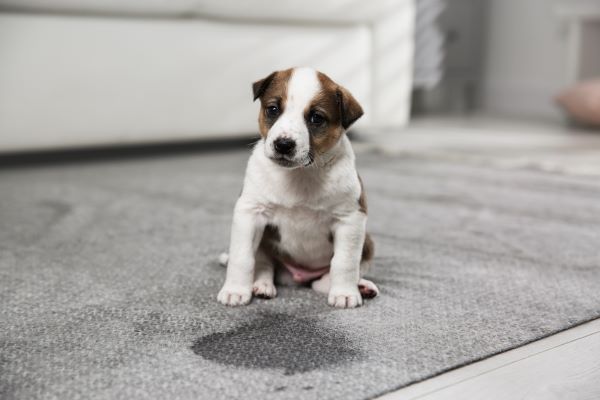
- Scratching on entrance and/or exit ways (like doors, windows)
- Self-harming (OCD like stress behaviours such as tail chasing), over-grooming
- Pacing, restlessness
- Panting, stress salvation
- Escaping or attempting to escape the property.
- Destructive behaviours (chewing of furniture, shoes or clothing, digging holes in the backyard etc.) that only occur when the dog is alone.
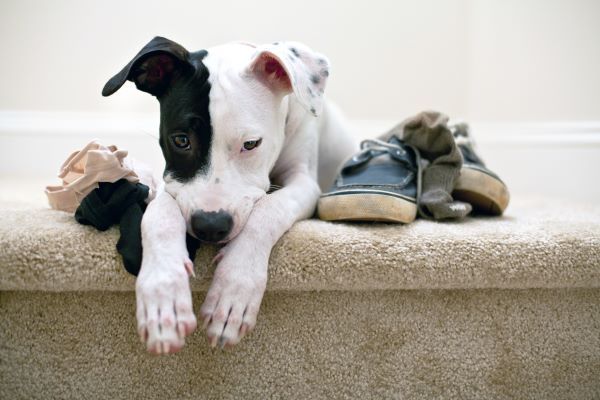
How can separation anxiety be avoided or treated?
We all know, prevention is better than cure! It is obviously much easier and also more humane to the animal to put measures in place so your dog does not develop separation anxiety from the start. With a bit of training and following some golden rules, separation anxiety can easily prevented.
Once a dog develops separation anxiety it is important to get professional advice from a certified in dog trainer and behaviourist. In severe cases of separation anxiety, medication together with behaviour modification may be needed
Here are our top training tips and rules:
- Encourage your dog to have time away from you whilst you are home. Confined areas like crates or playpens, or just setting up baby gates to restrict your dog from following you everywhere when at home, can help achieve that. Leave your dog in this area, preferably when it is tired or has a long-lasting chew treat to keep itself occupied, and get on with your tasks in your house. Having your dog spend time away from you while you are at home can help build independence. E.g. if your dog sleeps on your bed, teach him to sleep on its own bed, maybe even in a separate room.

- From the beginning, start leaving your dog alone for short periods of time. Bringing out the garbage, going for a short walk and leaving your dog alone at home will get them used to it. If, at any stage your dog seems stressed, reduce the time you are away and then increase the alone time slowly again. If your dog cannot deal with being alone for five minutes, try starting with one minute. Alternatively, you might find that twenty minutes is enough time for him at the start. If he is fine with that, do this daily for a couple of days before you push him to 25 – 30 minutes. Be patient and take your time with this process.
If you have a new puppy, we recommend you follow this home alone plan:
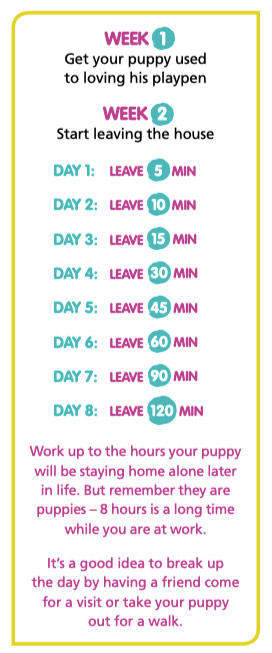
If you have a new rescue dog, we recommend you follow this home alone plan:

- Avoid coming back to your dog if he barks or whines. If you return to your dog when he is barking and whining, he may learn that this behaviour is what makes you come back.
- If your dog is a rescue dog, ensure you make time to settle your dog into your new home. Many rescue dogs have had multiple homes and can have abandonment issues. Giving him confidence that you are coming back to him will help settle him in faster.
- Leave your dog in a safe place. No matter if your dog is a puppy or a rescue dog you just adopted, always leave your dog in a safe place such as a crate for short periods or a fenced area, so that he can’t harm himself or destroy anything that might be precious to you. Create a space your dog feels safe in, even when you leave the room/ the house. It can be a crate, it can be your bedroom or it can be a separate room set up for your dog.
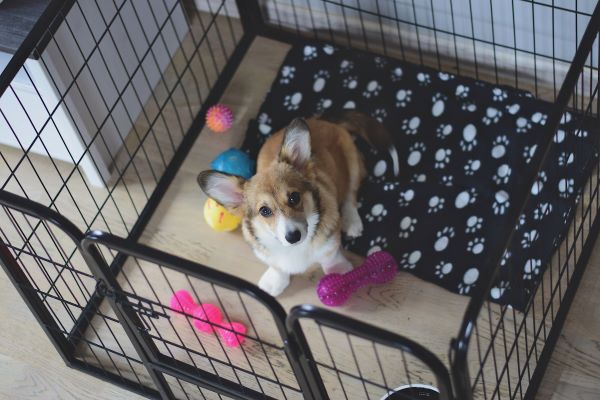
- Leave something with your smell on. It can be comforting to leave an old t-shirt that smells of you in your dog’s bed when you go out. Unless your dog is crated, always leave the collar with his ID tag on him, in case he manages to escape.
The area that you leave him in should have water, be in the shade, have his dog bed, toys, chew treat and/or a food dispenser. - Leave him with something engaging. It is often the moment you leave the house that is most stressful for your dog. When you go out, leave him with something engaging, like a chew treat or a mentally stimulating food dispenser toy, to keep him occupied and make your departure positive.

- Don’t make a big deal of coming home. Although it may be difficult, try to get into the habit of not making a big deal about coming home to your dog. Having your dog wait behind a baby gate may also help to settle him down before you interact with him. Also don’t make leaving the house a big deal. Calm behaviour on your end will help your dog to keep calm.
- Exercise your dog before you leave. Take him for a big walk and play a bit with him. You could also do some training or nose-work games to tire him out mentally. Then let your dog calm down and relax for around 10-20 minutes before you leave, so the arousal and excitement from the walk/ training or play can reduce and your dog is more relaxed by the time you leave. Schedule your morning routine to set your dog up for success.
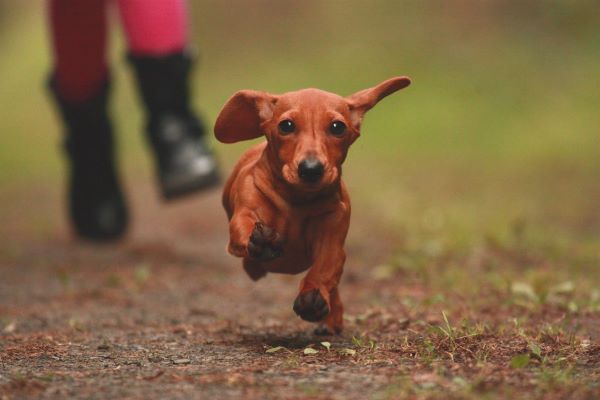
- Consider obedience training. If your dog struggles with you being out of its sight, obedience training can help to build confidence that you can move out of sight and come back. E.g. teach your dog to lay down or sit and stay, while you go out of sight for a couple of minutes. You can extend this and teach your dog to go on its bed and stay there for 10 minutes. This will allow you to practice leaving your house and coming back without your dog getting all worked up.
- Change your leaving routines. The moment you leave the house is often the most stressful. You can be sure that your dog is your biggest stalker and knows your routines inside out. You grab your running shoes and he gets excited because it means walkies? Well, it’s the same when you get ready for work and he knows he will be left alone. And with every little step you take e.g. finding your handbag, packing your computer, picking up car keys etc… your dog’s anxiety level increases. Try and break down these belief patterns by changing your routines and desensitising your dog to some of the triggers. E.g. randomly pick up your keys and put them down again. Put on your work jacket and do not leave the house. This is about changing belief patterns to teach your dog that you taking your work bag doesn’t mean he will be left alone.
- Use food or an activity to keep him busy. Skip a meal and use leaving your house as an opportunity for your dog to eat, and provide really yummy food. If he does not like his food, switch to something he goes crazy for. Put it in a food dispensing toy that will keep your dog occupied when you leave. You want something that keeps your dog busy for at least 20-30 minutes. If your dog is hungry, he may find pleasure in eating. Some dogs may be too stressed to eat their food. So you could try food that he really goes crazy for.
- Use music or TV. Leave the TV/ radio on with some calming classical music. There are specific channels that you can find on YouTube.
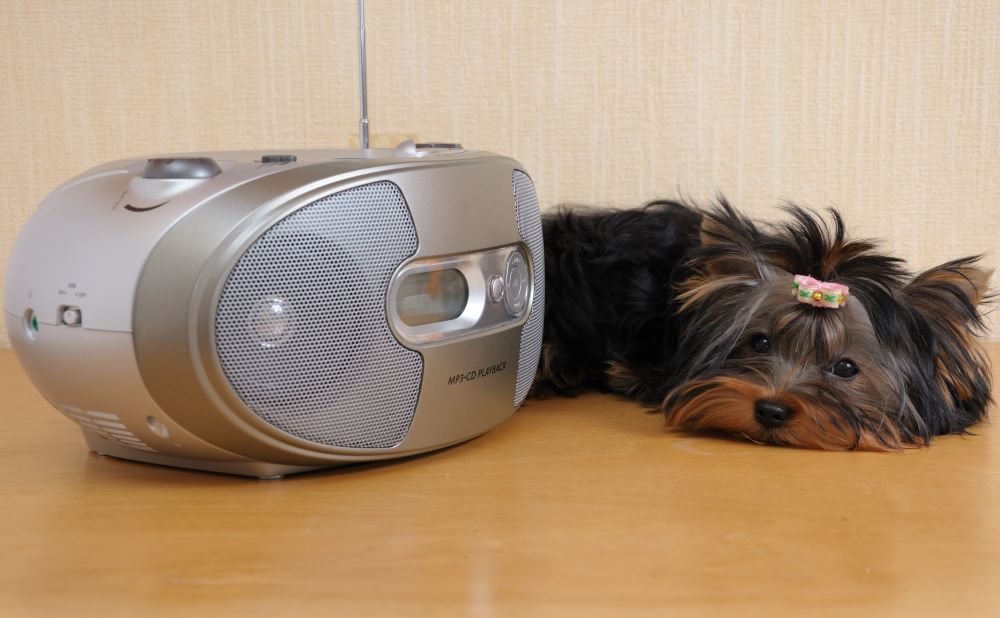
- Consider getting outside help. Think about alternative solutions to help your dog break up long days by itself. Maybe a doggy day care, a pet sitter or a dog walker can help so your pet doesn’t feel too lonely.
- You can also try calming supplements like an Adaptil diffuser or collar.
Is getting another pet a good idea?
The answer is yes and no. We generally prefer not using another pet as a crutch, because if something happens to the other pet (going to hospital, for example), your pet will be by itself again and the separation anxiety may be even worse.
If your dog enjoys the company of another pet, having a companion at home can help. But quite often we see dogs who are the centre of their owner’s universe and then get demoted to the deputy when the new dog arrives. This is not an ideal situation for a dog already prone to anxiety. Keep in mind also that getting another pet means all the work involved for you in settling in a new pet to your family.
Bow Wow Meow Pet Insurance can help protect you and your dog should an unexpected trip to the vet occur.
-
Find out more about our dog insurance options
-
Get an online pet insurance quote
Bow Wow Meow is proud to have been awarded winner of Canstar’s ‘Most Satisfied Customers’ Award in the Pet Insurance category for both 2024 and 2025!
Bow Wow Meow is proud to have been chosen as Product Review’s Pet Insurance Award Winner every year from 2018 to 2025! This is based on 2,995 independent customer reviews (as at 21/01/2025), with an overall rating of 4.3*
Google Review rating = 4.5* (based on 968 reviews)
Trust Pilot rating = 4.6* (based on 531 reviews)
Bow Wow Meow is proud to have been chosen as Product Review’s Pet Insurance Award Winner every year from 2018 to 2025! This is based on 2,995 independent customer reviews (as at 21/01/2025), with an overall rating of 4.3*
Google Review rating = 4.5* (based on 968 reviews)
Trust Pilot rating = 4.6* (based on 531 reviews)
Bow Wow Meow has been chosen as a winner in the Finder Pet Insurance Awards 2024. Finder’s panel of experts analysed over 140 quotes to award our Ultimate Care Plan the winner of the “Pet Insurance – Value” category.


